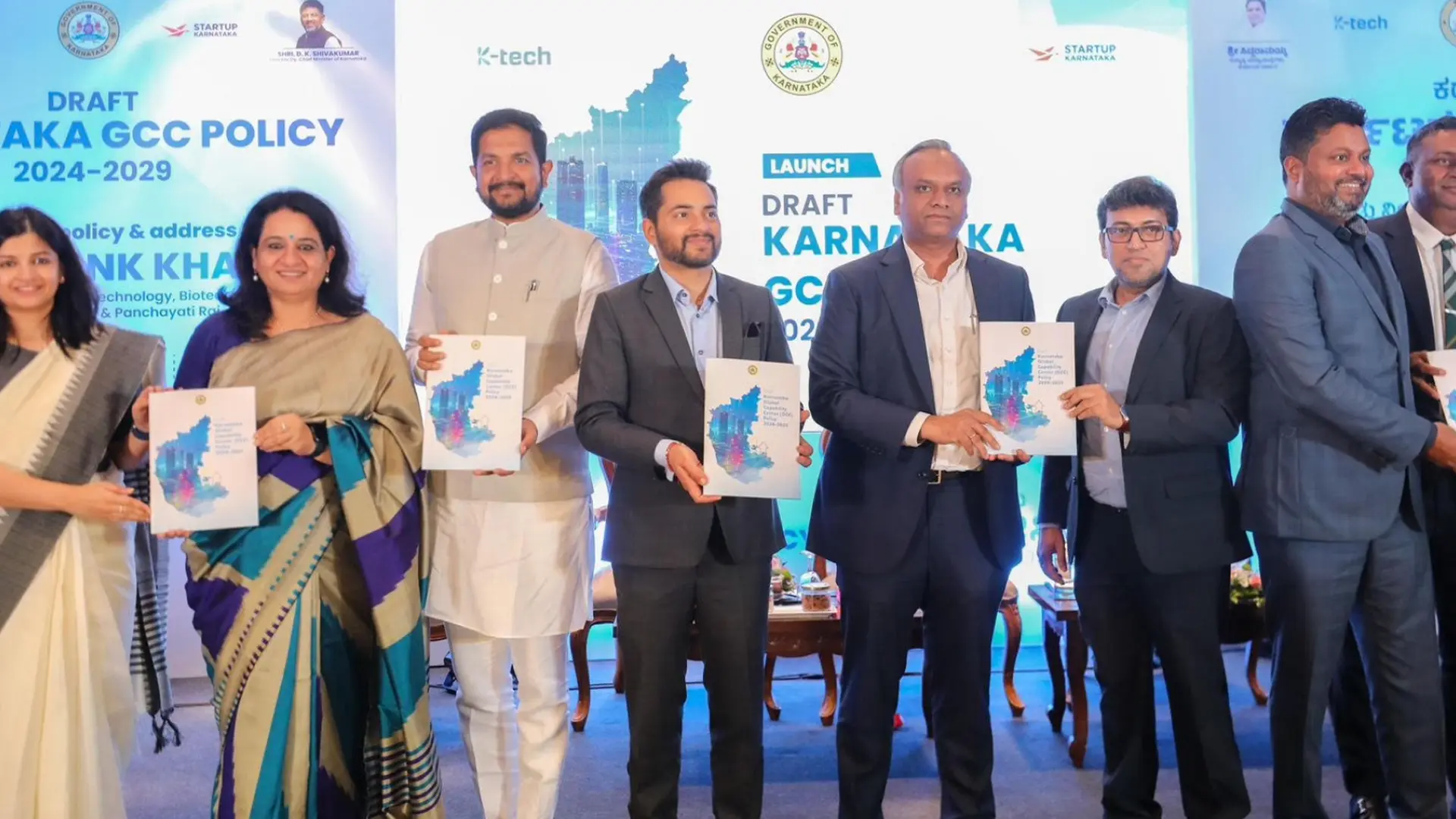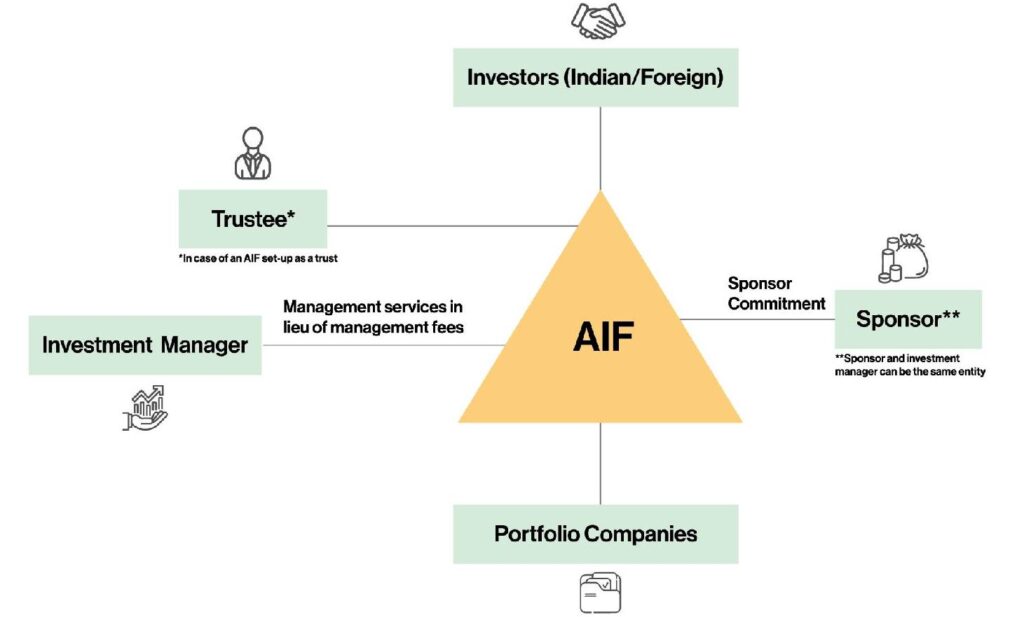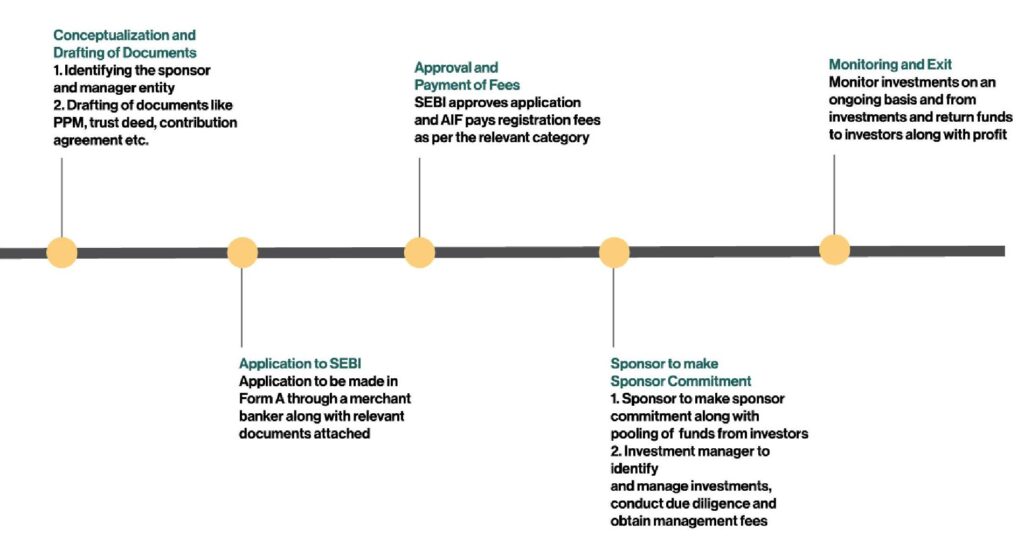Introduction
Security of sensitive business information, protection of intellectual property and trade secrets and trust in collaborations are critical aspects of business security in an increasingly competitive and data-driven market today. It is to this effect that businesses typically execute non disclosure agreement (“NDA”), which imposes a contractual obligation on the party receiving the protected information to not only keep the same confidential but to not disclose or divulge such information without permission from the disclosing party.
NDAs can relate to trade secrets, business models, or intellectual property; all of which help to ensure confidentiality and security in business partnerships. Fundamentally, this agreement ensures that the recipient of such confidential information is obligated to keep the same protected. As such, any breach of an NDA would typically build in mechanisms for compensation for damages caused by the party in breach of the NDA.
Overview of NDAs in Indian Law / Legal Environment
NDAs in India are enforceable as per the Indian Contract Act, 1872. They are very commonly employed across sectors and can be used for purposes ranging from technology/manufacturing to consulting to even labour or critical events requiring protection of sensitive information. An airtight NDA defines what is and is not confidential information, limits the use of such information, and outlines the consequences for a breach of the obligations. NDAs are widely used in India to guard proprietary information involving in commercial transactions, employment, or partnership. NDAs keep the most important business information private by:
- Security of proprietary information from unauthorized use or leakage.
- Developing intellectual property, trade secrets, and business plans protection laws.
- Establishing trust in relationships while going through mergers, acquisitions or negotiations.
NDAs by ensuring confidentiality preserve a business’s competitive edge and eliminate litigation.such as technology, manufacturing, and consulting. NDAs can be unilateral, mutual or multilateral, but for it to be effective they should meet Indian laws. The success of an NDA depends on its definitions, enforceable provisions and jurisdiction. A breach of an NDA can be financially and reputationally disastrous.
What is a Non-Disclosure Agreement (NDA)?
A Non-Disclosure Agreement (NDA) is a legally binding contract designed to safeguard sensitive and proprietary information shared between two or more parties. It establishes a confidential relationship by outlining the type of information that must remain undisclosed, the purpose of sharing the information, and the consequences of any breach. NDAs are integral to protecting intellectual property, trade secrets, and other business-critical data.
Definition of a Non-Disclosure Agreement
In simple terms, an NDA is a formal agreement where one party agrees not to disclose or misuse the confidential information provided by the other party. Colloquially also referred to as a confidentiality agreement, an NDA ensures that the disclosed information is used solely for the intended purpose and remains secure. NDAs are enforceable under the Indian Contract Act, 1872, making them a vital tool in safeguarding sensitive data in India.
Key Purposes and Objectives of NDAs
The primary goal of an NDA is to maintain the confidentiality of information and prevent its unauthorized use. Key objectives include:
- Protecting Intellectual Property: Ensuring that trade secrets, patents, and proprietary processes remain secure.
- Establishing Trust: Building a reliable relationship between parties, particularly in mergers, acquisitions, or joint ventures.
- Avoiding Misuse of Data: Preventing employees, contractors, or partners from sharing confidential details with competitors.
- Defining Legal Recourse: Outlining the consequences of a breach, including penalties and legal actions.
By clearly defining the scope of confidentiality, NDAs reduce the likelihood of disputes and offer a framework for resolution if a breach occurs.
Real-Life Examples of NDA Use in Business Scenarios
NDAs are widely used across various industries and situations, such as:
- Employment Agreements: Employers often require NDAs to protect internal policies, client lists, and proprietary methods from being disclosed by employees.
- Mergers and Acquisitions: During due diligence, NDAs secure sensitive financial and operational data exchanged between companies. This can also include restrictions on disclosure of investment by a party and prevention of any media release (as typically required by incubators).
- Technology and Innovation: Startups and tech companies frequently use NDAs to safeguard unique ideas, algorithms, or software codes when pitching to investors or collaborating with developers.
- Freelance and Consulting Projects: Freelancers or consultants working with confidential client data are bound by NDAs to prevent misuse.
- Vendor or Supplier Relationships: NDAs protect sensitive pricing strategies, product designs, or supply chain details shared with third-party vendors.
For example, a startup seeking funding may share its business model, product specifications and financial projections with potential investors under an NDA, ensuring these details remain confidential and protected from competitors.
Types of Non-Disclosure Agreements in India
Non-Disclosure Agreements (NDAs) come in various forms depending on the nature of the relationship and the flow of confidential information between parties. Understanding the types of NDAs is essential for selecting the most suitable agreement to safeguard sensitive information. Typically, an NDA will impose a total ban on disclosure, except where such disclosure is required by law or on order of any statutory authority. Below are the primary types of NDAs used in India:
1. Unilateral NDAs
A Unilateral NDA is a one-sided agreement where only one party discloses confidential information, and the receiving party agrees to protect it. This type of NDA is commonly used when a business shares proprietary information with employees, contractors, or third-party vendors who are not expected to reciprocate with their own confidential data.
Common Use Cases:
- Protecting trade secrets during product development.
- Sharing sensitive business data with potential investors.
- Securing intellectual property shared with a freelancer or consultant.
Example: A tech startup providing details of its proprietary algorithm to a marketing agency under a unilateral NDA.
2. Bilateral/Mutual NDAs
A Bilateral NDA, also known as a mutual NDA, involves two parties sharing confidential information with each other and agreeing to protect it. This type of agreement is ideal when both parties need to exchange sensitive data, such as in partnerships, collaborations, or joint ventures.
Common Use Cases:
- Collaborations between companies on a new product or service.
- Mergers and acquisitions where both entities share financial and operational data.
- Negotiations between two businesses for a potential partnership.
Example: Two pharmaceutical companies working together on developing a new drug may use a mutual NDA to safeguard their research and development data.
3. Multilateral NDAs
A Multilateral NDA is used when three or more parties need to share confidential information among themselves while ensuring mutual protection. This type of NDA simplifies the process by consolidating multiple bilateral agreements into a single document, reducing legal complexities and administrative overhead.
Common Use Cases:
- Consortiums or alliances in large-scale projects like infrastructure development.
- Joint ventures involving multiple stakeholders.
- Collaborative research projects between academic institutions and private companies.
Example: A group of IT companies collaborating on a government project to develop a unified digital platform may use a multilateral NDA to protect their individual contributions.
Essential Clauses in an NDA
A well-drafted Non-Disclosure Agreement (NDA) is only as strong as the clauses it includes. Each clause serves a specific purpose in defining the rights and obligations of the parties, ensuring comprehensive protection of confidential information. Here are the key clauses every NDA should have:
1. Confidentiality Clause
The confidentiality clause is the cornerstone of an NDA. It explicitly defines what constitutes “confidential” or “privileged” or “sensitive” information, how it can be used, and the obligations of the receiving party to protect it.
Key Points to Include:
- Clearly specify the information considered confidential.
- Outline permissible uses of the information.
- Prohibit unauthorized sharing, reproduction, or disclosure.
2. Non-Compete Clause
A Non-Compete Clause prevents the receiving party from using the confidential information to gain a competitive advantage or engage in competing activities.
Key Points to Include:
- Define the duration of the non-compete obligation.
- Specify the geographic scope where competition is restricted.
- Ensure compliance with Indian laws to avoid enforceability issues.
Example: An NDA between a software company and a vendor may include a non-compete clause to prevent the vendor from replicating or selling similar software.
3. Duration and Scope of Confidentiality
This clause specifies how long the confidentiality obligation will remain in effect and the extent to which it applies.
Key Points to Include:
- Duration: Specify whether confidentiality is time-bound (e.g., 3-5 years) or indefinite.
- Scope: Clearly define the level of protection and the limitations of disclosure.
Tip: While most NDAs in India enforce confidentiality for a limited period, indefinite clauses are often used for trade secrets.
4. Dispute Resolution Clause
This clause outlines how disputes related to the NDA will be resolved. It ensures a smooth resolution process and avoids lengthy litigation.
Key Points to Include:
- Specify the jurisdiction under which disputes will be resolved.
- Choose between arbitration, mediation, or court proceedings.
- Define the governing laws (e.g., Indian Contract Act, 1872).
Example: An NDA might state that disputes will be resolved through arbitration under the Arbitration and Conciliation Act, 1996.
5. Exclusions from Confidentiality
This clause identifies situations where confidentiality obligations do not apply.
Common Exclusions:
- Information already in the public domain.
- Information disclosed with prior consent.
- Data independently developed without using confidential information.
Including clear exclusions prevents ambiguity and protects the receiving party from unwarranted liability.
Tips for Drafting a Legally Sound NDA in India
- Be Specific: Avoid vague terms; clearly define confidential information and obligations.
- Customize the NDA: Tailor the agreement to the specific needs of your business and the type of relationship.
- Include Remedies for Breach: Specify monetary penalties or injunctive relief for violations.
- Use Simple Language: Avoid overly complex legal jargon to ensure all parties fully understand their obligations.
- Seek Professional Help: Consult legal experts to ensure compliance with Indian laws and enforceability in courts.
Adding these essential clauses strengthens the NDA, ensuring that confidential information remains secure and disputes are minimized.
Non Disclosure Agreements Format
Overview of an NDA Template in India
An NDA template serves as a standard framework for creating confidentiality agreements tailored to specific needs. While the format can vary depending on the context, every NDA must clearly define the scope of confidentiality, the parties involved, and the remedies in case of a breach. A professionally drafted NDA ensures enforceability under the Indian Contract Act, 1872.
Key Elements to Include in an NDA
- Parties to the Agreement
- Clearly identify the disclosing party and the receiving party.
- Include details such as names, designations, and addresses to eliminate ambiguity.
- For multilateral NDAs, list all parties involved.
Example: “This Agreement is entered into by ABC Pvt. Ltd. (Disclosing Party) and XYZ Pvt. Ltd. (Receiving Party) on [date].”
- Definition of Confidential Information
- Specify the information considered confidential, such as trade secrets, business strategies, or technical data.
- Use precise language to avoid disputes about the scope of confidentiality. The more detailed the scope of what constitutes “confidential information”, the better clarity that is brought about on the non-disclosure obligation.
Example: “Confidential Information includes but is not limited to financial data, client lists, marketing strategies, and proprietary software.”
- Obligations of the Receiving Party
- Detail the receiving party’s responsibilities to safeguard the information.
- Prohibit disclosure to third parties and unauthorized use.
Example: “The Receiving Party agrees not to disclose the Confidential Information to any third party without prior written consent of the Disclosing Party.”
- Consequences of Breach
- Define the penalties for unauthorized disclosure or misuse of confidential information.
- Specify remedies such as monetary damages, injunctions, or termination of the agreement.
Example: “In the event of a breach, the Receiving Party shall indemnify the Disclosing Party for all losses, including legal fees and damages.”
- Jurisdiction and Governing Law
- Specify the jurisdiction under which disputes will be resolved.
- Include the applicable legal framework, such as Indian Contract Act, 1872.
Example: “This Agreement shall be governed by and construed in accordance with the laws of India, and disputes shall be subject to the exclusive jurisdiction of the courts in [city].”
Sample NDA Template for Download
To make the process easier, here’s a downloadable sample Non Disclosure Agreement PDF template for Indian businesses. The NDA Document includes all the main elements mentioned , ensuring compliance and clarity.
Download Sample Non Disclosure Agreement Format.
Legal Validity of NDAs in India
Non-Disclosure Agreements (NDAs) are widely used to protect sensitive information in India, but their enforceability depends on how well they align with the legal framework. Understanding the legal validity of NDAs is crucial for ensuring that these agreements hold up in a court of law.
Enforceability Under the Indian Contract Act, 1872
NDAs in India are governed by the Indian Contract Act, 1872, which mandates that:
- Lawful Consideration and Object: The agreement must not violate any existing laws or public policy.
- Free Consent: All parties must willingly agree to the terms without coercion, fraud, or misrepresentation.
- Definite and Certain Terms: The NDA must clearly define the confidential information, obligations, and consequences of a breach.
Key Point: NDAs with overly broad or vague clauses may be deemed unenforceable. Clauses such as “indefinite confidentiality for all types of information” are likely to be rejected by Indian courts.
Relevant Case Laws Supporting NDA Breaches in India
Case laws play a significant role in determining the enforceability of NDAs. Below are some landmark cases that highlight how Indian courts address NDA breaches, which have informed and clarified the interpretation of the Indian Contract Act, 1872 and its governance of non-disclosure agreements, including the enforceability of such agreements and their legal validity. These case laws have also informed the principle of “reasonableness” in enforcing such restrictions, from the perspective of protecting a business and its data:
- Niranjan Shankar Golikari v. Century Spinning & Manufacturing Co. Ltd. (1967):
- The Supreme Court upheld the validity of confidentiality clauses in employment contracts, ruling that such restrictions must be reasonable and protect legitimate business interests.
- Superintendence Company of India v. Krishan Murgai (1980):
- This case emphasized that NDAs and restrictive covenants must strike a balance between protecting business interests and not imposing unreasonable restrictions on an individual’s right to work.
- American Express Bank Ltd. v. Priya Puri (2006):
- The Delhi High Court ruled that NDAs signed by employees are enforceable, particularly when the disclosed information constitutes trade secrets or proprietary knowledge.
- Gujarat Bottling Co. Ltd. v. Coca-Cola Co. (1995):
- The court underscored that an injunction can be granted to prevent further disclosure of confidential information in case of a breach of an NDA.
Key Point: Courts often evaluate the reasonableness of the NDA’s terms and whether the breach caused material harm to the disclosing party.
Breach of NDAs: Consequences & Remedies
A breach of a Non-Disclosure Agreement (NDA) is a serious violation that can lead to significant legal, financial, and reputational damage. NDAs are legally binding contracts that ensure the confidentiality of sensitive information. Breaching an NDA can result in severe consequences, including legal actions, fines, and loss of business trust. This section explores common types of NDA breaches, legal remedies available in India, and ways to mitigate risks.
Common Types of Breaches
- Intentional Disclosure of Confidential Information
- This occurs when the receiving party intentionally discloses confidential information to unauthorized third parties.
- Example: An employee shares proprietary business strategies with a competitor to gain personal benefits.
- Accidental Breaches
- These breaches occur due to negligence, such as sending an email to the wrong person or failing to secure confidential files.
- Example: A company accidentally discloses confidential client information in an unsecured email.
What Happens If You Breach a Confidentiality Agreement?
A breach of the NDA is considered a civil offense in India. NDAs are legally enforceable contracts, and the receiving party is obligated to keep the disclosed information confidential. If the confidentiality clause is breached, several legal consequences may follow:
Legal Remedies for Breach of NDA
In the event of a breach, the NDA itself may outline remedies such as termination, injunctions, and indemnification.
- Injunctions
- The non-breaching party may seek a court order to stop the breaching party from further disclosing confidential information. Injunctions may be interim (temporary) or perpetual (permanent).
- Legal Basis: Governed by Order XXXIX Rule 1 and 2 of the Code of Civil Procedure, 1908, and Section 38 of the Specific Relief Act, 1963.
- Indemnification and Damages
- The breaching party may be required to indemnify the non-breaching party for any losses, including court fees, legal costs, and actual damages incurred. This can include both compensatory and consequential damages.
- Compensatory Damages: These are calculated based on the actual financial loss suffered due to the breach.
- Example: If a business loses ₹50,000 due to a breach, compensatory damages may cover that loss.
- Consequential Damages: These damages include losses that occurred indirectly due to the breach, such as lost profits or opportunities.
- Example: A tour company loses potential sales after a breach prevents them from securing a necessary asset.
- Criminal Remedies
- In certain cases, criminal remedies may apply, particularly under the Indian Penal Code (IPC) and the Information Technology Act, 2000.
- Section 72A of the IT Act, 2000 provides for imprisonment up to 3 years or fines up to ₹5 lakh for the unlawful disclosure of information obtained during a contractual relationship.
Why Should You Not Break a Confidentiality Agreement?
Breaking an NDA can lead to severe consequences, including:
- Legal and Financial Penalties
- NDAs often specify penalties for violations, including injunctions, indemnifications, and damages.
- A breach could result in substantial financial loss, not only in direct damages but also in reputational harm and loss of future business.
- Job Termination and Reputational Damage
- For employees or contractors, breaching an NDA may result in termination from their position and loss of professional reputation.
- Businesses that breach NDAs risk losing client trust and face the possibility of damaging their public image, which could lead to a loss of clients and future opportunities.
Different Types of Contract Breach Remedies
The remedy for a breach of NDA depends on the specific provisions in the agreement, the nature of the violation, and the facts of the case. Common remedies include:
- Damages for Compensation
- Compensatory Damages: The most common remedy, compensatory damages are calculated based on the actual losses suffered due to the breach, including expectation damages and consequential damages.
- Example: A business loses potential profits from a deal that fell through due to a breach.
- Specific Performance
- Courts may order the breaching party to fulfill its contractual obligations if monetary damages are insufficient. This remedy is more common for contracts involving unique or irreplaceable items.
- Example: A company may seek specific performance if the item breached is a unique asset that cannot be replaced.
- Injunctions
- Injunctions prevent the breaching party from further disclosing confidential information. These can be temporary or permanent, depending on the severity of the breach.
- Liquidated Damages
- A set amount specified in the NDA to cover the breach, particularly where it is difficult to quantify actual damages. Liquidated damages clauses are often used in construction contracts, real estate deals, and partnerships.
- Revocation
- The non-breaching party can rescind the contract, returning both parties to their original position. This remedy is typically used for significant breaches that go to the heart of the agreement.
How to Mitigate the Risk of NDA Breaches
- Draft Clear and Precise NDAs
- Ensure that the NDA clearly defines the scope of confidentiality and the consequences of a breach. Consider incorporating clauses for arbitration to resolve disputes efficiently.
- Implement Security Measures
- Use encryption, access restrictions, and secure systems to prevent accidental breaches.
- Regular Audits and Training
- Conduct periodic reviews of compliance and train employees and third parties on proper handling of confidential information.
- Legal Preparation
- Ensure that any breach is met with swift legal action through well-defined remedies in the NDA.
This proactive approach helps mitigate risks and maintain business integrity.
Importance of Customized NDAs for Businesses
A generic NDA may not always be effective in addressing the specific needs and risks of a business. Customized NDAs are essential for ensuring that the confidentiality, legal obligations, and remedies align with the unique aspects of each business relationship.
Benefits of Tailoring NDAs for Specific Business Needs
- Enhanced Protection of Sensitive Information
Custom NDAs allow businesses to define confidential information more precisely, ensuring better protection for proprietary data, trade secrets, and strategic plans.
- Addressing Unique Business Risks
A tailored NDA can address the unique risks associated with different types of business relationships, such as vendor contracts, partnerships, or employee agreements, ensuring that all specific scenarios are covered.
- Clearer Terms and Obligations
By customizing the terms and obligations, businesses can ensure both parties have a clear understanding of their responsibilities, reducing the potential for disputes.
- Better Enforcement of Terms
A well-crafted NDA that aligns with business needs is easier to enforce in case of breach, as it clearly defines the scope of confidential information, obligations, and penalties for violation.
- Minimized Legal Loopholes
Customization helps eliminate ambiguities and potential legal loopholes that could undermine the NDA’s effectiveness in protecting confidential information.
Wrapping up, Non-Disclosure Agreements (NDAs) are a vital tool for businesses in India to protect confidential information and ensure that sensitive data remains secure. Whether it’s a unilateral, bilateral, or multilateral NDA, having the right type tailored to your specific needs is essential for safeguarding trade secrets, business strategies, and proprietary information. A well-drafted NDA template can serve as a solid foundation for any business relationship, offering clarity on obligations and consequences in case of breach. Understanding the legal framework surrounding NDAs, including remedies for breach, is crucial to ensure enforceability under Indian law. To maximize protection, it’s highly recommended to consult with a legal professional to draft a customized NDA that best suits your business’s unique requirements.
FAQs on Non-Disclosure Agreements (NDAs) in India
1. What is an NDA, and why is it important in business?
A Non-Disclosure Agreement (NDA) is a legally binding contract that protects confidential information shared between parties during business dealings. It ensures sensitive data like trade secrets, strategies, or intellectual property remains secure, preventing unauthorized disclosure and fostering trust in business relationships.
2. What are the types of NDAs commonly used in India?
The three main types of NDAs are:
- Unilateral NDA: One party discloses information to another.
- Bilateral (Mutual) NDA: Both parties share confidential information.
- Multilateral NDA: Multiple parties are involved in the agreement.
Each type caters to different business scenarios and ensures tailored protection.
3. What happens if someone breaches an NDA in India?
A breach of NDA can lead to serious consequences, including:
- Civil remedies: Injunctions, monetary damages, or compensation under the Indian Contract Act, 1872.
- Criminal penalties: Punishments under laws like the IT Act, 2000 for unauthorized data disclosure.
Legal actions ensure accountability and protect the affected party’s interests.
4. How can businesses draft an effective NDA?
Businesses should seek legal assistance to draft customized NDAs that address their specific needs. This includes tailoring clauses for confidentiality, scope, and remedies for breach, ensuring compliance with Indian laws for enforceability.
5. Are NDAs legally enforceable in India?
Yes, NDAs are enforceable under Indian laws, including the Indian Contract Act, 1872, Specific Relief Act, 1963, and other relevant statutes. Courts uphold NDAs as long as the terms are fair, reasonable, and not overly broad.
7. Why is it essential to customize an NDA instead of using a generic one?
A customized NDA addresses the unique risks and requirements of your business, ensuring better protection of sensitive information. Tailoring an NDA minimizes legal loopholes, clarifies obligations, and provides effective remedies for breach.
8. How long does an NDA remain valid?
The validity of an NDA depends on the terms set in the agreement. It can be for a fixed duration (e.g., 2-5 years) or remain indefinite, especially for trade secrets or proprietary information that requires long-term protection.































































